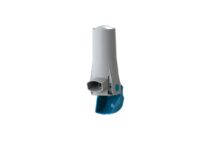The Central Drugs Standard Control Organization (CDSCO), which happens to be India’s central regulatory body for pharmaceuticals, on April 30, 2024, went on to withdraw the power held by the state governments to issue NOCs for manufacturing banned, unapproved, or even new drugs when it comes to export purposes.
This step comes after the Indian pharma companies started coming under intense scrutiny for exporting adulterated drugs, especially the cough syrups that were sold in Gambia and Uzbekistan, which resulted in the deaths of several children.
There were also scenarios wherein pharma manufacturers went on to recall their products because of manufacturing defects. Although the Indian pharmaceutical sector has gone on to face a lot of backlashes in the last couple of years, the country has continued to consolidate its position as the pharmacy of the world.
If we have a look at the figures, India went on to export drugs as well as pharmaceuticals, costing $28 billion in FY2023–24, which was an increase of 10% from the previous FY, as per the Commerce & Industry ministry.
Indian pharmaceutical exports went on to expand their worldwide footprint across countries such as Comoros, South Sudan, Montenegro, Chad, Brunei, Latvia, Sweden, Haiti, Ethiopia, and Ireland. The top markets for Indian pharma exports happened to be the US, the UK, South Africa, the Netherlands, and Brazil.
The US, which comprised more than 31% of the country’s pharma exports in FY223-24, has been reporting very high levels in terms of drug shortages.
Although there are numerous factors that happen to be affecting shortages, one of the pivotal elements happens to be disturbances in the supply chain. As a matter of fact, in April 2024, the U.S. Department of Health and Human Services went ahead and published a white paper pertaining to policy considerations so as to prevent drug shortages as well as mitigate supply chain vulnerabilities throughout the United States.
The white paper goes on to point out some prominent issues such as concentration among the middlemen, a dearth of transparency, and the prices when it comes to generic drugs that happen to be driven to levels that are so low that they go on to create insufficient incentives in terms of redundancy, purchasing, and distribution. As per the white paper, the time has indeed come to restore the balance and also build resilience as far as critical networks are concerned. And this is not just prudent but rather crucial, says MD of Zydus Lifesciences and VP of IPA, Sharvil Patel.
As a matter of fact, an April 30, 2024, evaluation from IIFL Securities went on to report that export-focused Indian generic companies are more likely to take advantage of the situation of drug shortages across the US. Their analysis goes on to suggest that among the Indian generic players, such as the likes of Aurobindo, Sun Pharma, and Gland Pharma, all happen to have the highest exposure to products that are under shortage in the US. But the fact is that the supply chain that goes on to support the exports of Indian pharmaceuticals happens to be met with many disruptions, like long transit times because of geopolitical issues across the Red Sea as well as high airfreight rates because of high demand.
As per one of the senior pharmaceutical officials, both the US and European routes are affected pretty badly. It is well to be noted that the sea freight transit time when it comes to Europe has gone up from 24 to 45 days, which is double. As far as the rates are concerned, they have also gone up in addition to the increase in nautical miles.
Hence, it has indeed become unviable to send products by sea.
In order to keep the inventory intact across their target markets and also ensure that there happens to be no shortage, air freight is indeed the only option left. But the fact of the matter is that even airfreight rates have seen an upsurge, forcing the pharma companies to take a bad hit on their margins, which, by the way, are already shrinking as far as the generic pharma sector is concerned.
The official went on to point out that this crisis has also changed the percentage of pharmaceuticals sent by each mode of transport. If one takes the split out, on the European lane, they used to send 40% through air and 60% via sea, but now all this has changed quite drastically as air comprises 85% of the shipping modes.
One of the founders of a consulting firm says that so as to deal with the supply chain crisis, there are several strategies that are taken up by the pharmaceutical shippers; however, all do accept the fact that it has disrupted the normal flow of the products. Shippers, according to him, who can afford really high airfreight rates are going ahead with that mode so as to meet the demands of the market, while there happen to be others who are dependent on sea and hence have to go through much longer transit times.
As a matter of fact, shippers are kind of trying to prioritize their shipments. Only those that are very urgent pharma shipments are sent as of now. Shippers are now anticipating that the sea and airfreight rates will slash, although there are none who are forecasting that the Red Sea crisis is going to be solved very soon.
The Indian pharmaceutical sector is also gearing up for a future where new types of pharma products and solutions happen to be emerging, which in turn also needs novel kinds of logistic offerings. According to the reports, India is indeed becoming a very bright destination in terms of clinical trials within the pharma sector, which is indeed going to need very exclusive and specialized logistics solutions.
As per Grand View Research, the Indian clinical trial market size happened to be valued at $2 billion in 2022 and is most likely to grow at a CAGR of 8% from 2023 until 2030.
Apparently, in February 2024, FedEx Express unveiled Mumbai’s FedEx Life Science Centre, which, as per the company, is setting a benchmark in the clinical trial supply chain not just in India but across the world.
At the time of the launch, the vice president of FedEx Express, marketing for the Middle East, India Subcontinent, and Africa- MEISA, Nitin Navneet Tatiwala, remarked that this is going to act as a one-stop shop in terms of clinical trial storage as well as the distribution requirements of healthcare customers across India. This new center is in addition to FedEx’s current Life Science Centers, which are based across the USA, South Korea, Japan, Singapore, and the Netherlands, thereby making it an international network of storage as well as distribution depots that go on to support their healthcare along with the pharmaceutical customers.




















